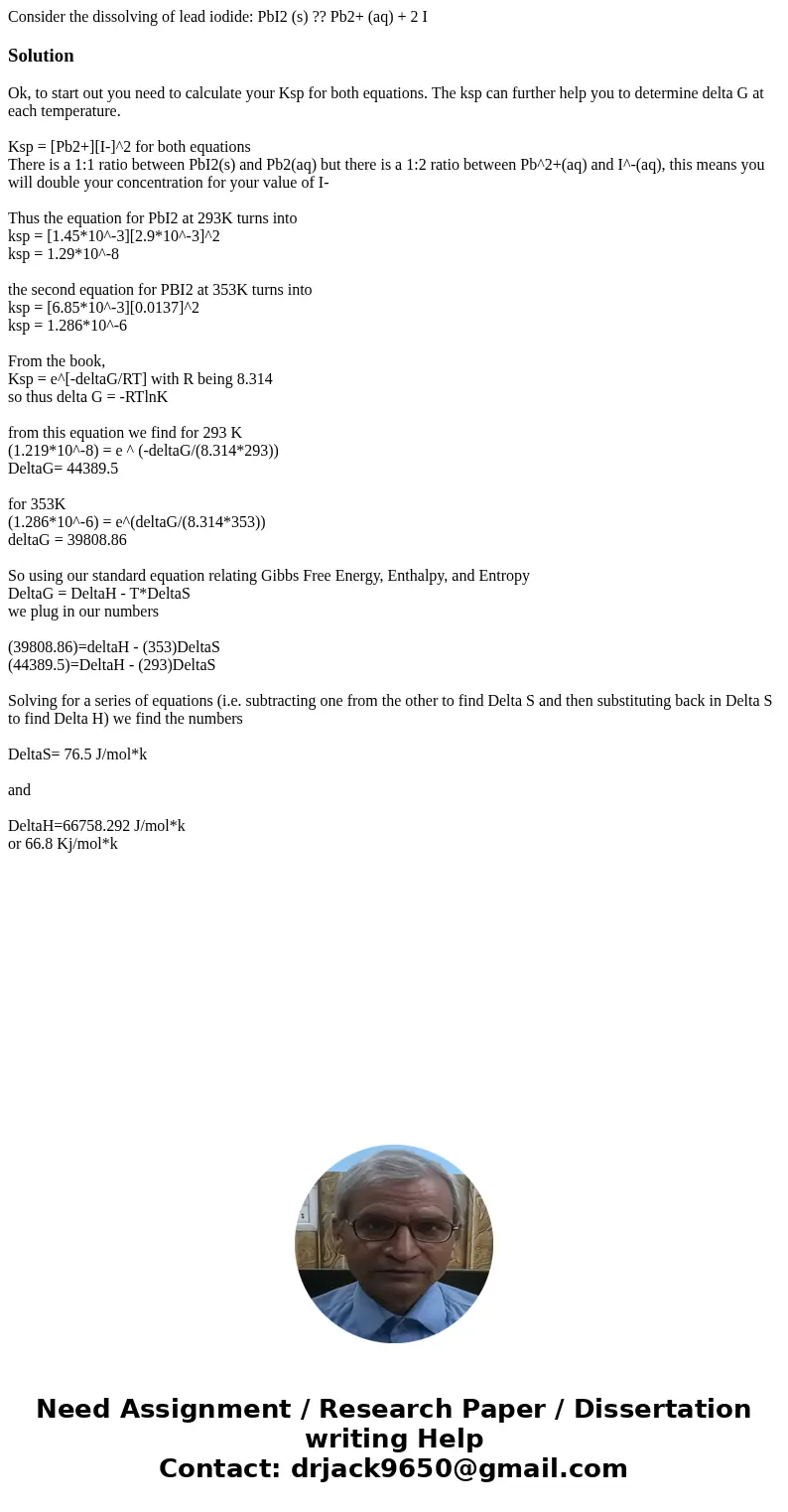Consider the dissolving of lead iodide PbI2 s Pb2 aq 2 ISo
Consider the dissolving of lead iodide: PbI2 (s) ?? Pb2+ (aq) + 2 I
Solution
Ok, to start out you need to calculate your Ksp for both equations. The ksp can further help you to determine delta G at each temperature.
Ksp = [Pb2+][I-]^2 for both equations
There is a 1:1 ratio between PbI2(s) and Pb2(aq) but there is a 1:2 ratio between Pb^2+(aq) and I^-(aq), this means you will double your concentration for your value of I-
Thus the equation for PbI2 at 293K turns into
ksp = [1.45*10^-3][2.9*10^-3]^2
ksp = 1.29*10^-8
the second equation for PBI2 at 353K turns into
ksp = [6.85*10^-3][0.0137]^2
ksp = 1.286*10^-6
From the book,
Ksp = e^[-deltaG/RT] with R being 8.314
so thus delta G = -RTlnK
from this equation we find for 293 K
(1.219*10^-8) = e ^ (-deltaG/(8.314*293))
DeltaG= 44389.5
for 353K
(1.286*10^-6) = e^(deltaG/(8.314*353))
deltaG = 39808.86
So using our standard equation relating Gibbs Free Energy, Enthalpy, and Entropy
DeltaG = DeltaH - T*DeltaS
we plug in our numbers
(39808.86)=deltaH - (353)DeltaS
(44389.5)=DeltaH - (293)DeltaS
Solving for a series of equations (i.e. subtracting one from the other to find Delta S and then substituting back in Delta S to find Delta H) we find the numbers
DeltaS= 76.5 J/mol*k
and
DeltaH=66758.292 J/mol*k
or 66.8 Kj/mol*k

 Homework Sourse
Homework Sourse